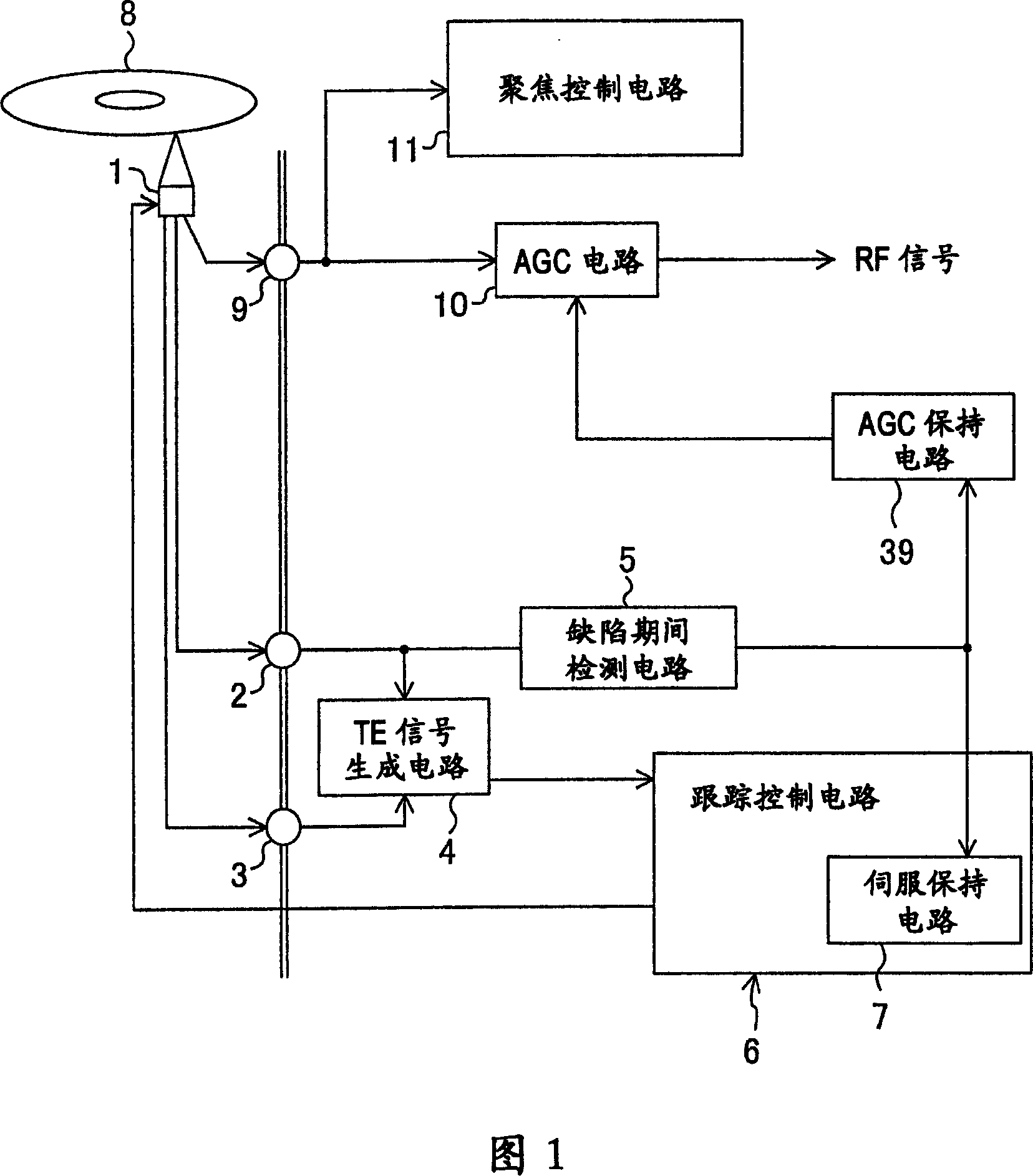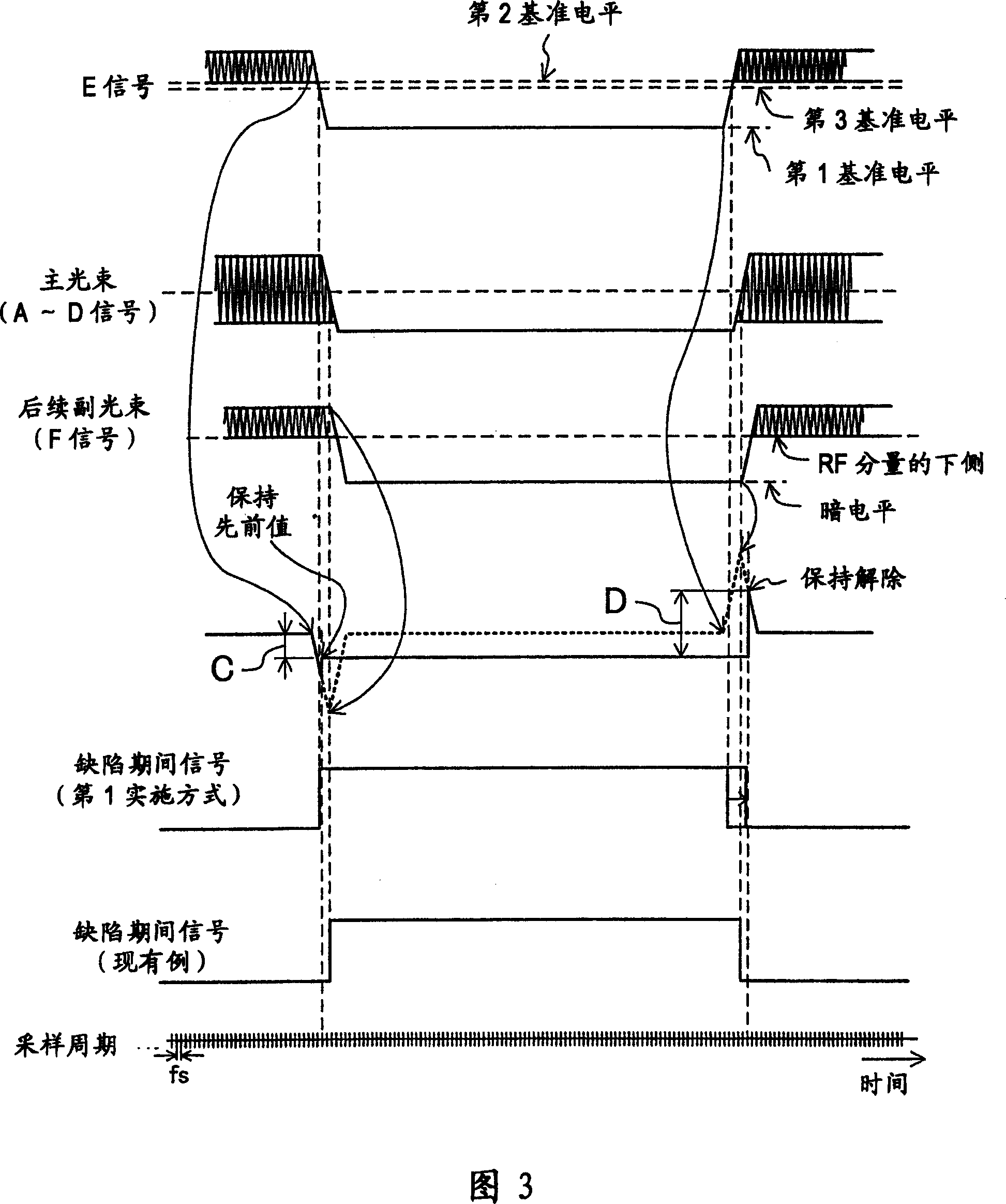Optical disk device
An optical disc device and optical disc technology, which are applied to optical recording heads, head configuration/installation, optical recording/reproduction, etc., can solve the problems of tracking error signal interference, tracking disturbance, deviation, etc., to suppress interference, reduce The effect of tracking bias
- Summary
- Abstract
- Description
- Claims
- Application Information
AI Technical Summary
Problems solved by technology
Method used
Image
Examples
no. 1 Embodiment approach
[0062] FIG. 1 shows an optical disc device according to a first embodiment of the present invention.
[0063] In the optical disc device shown in Fig. 1, 1 is an optical pickup, 8 is an optical disc, 2 is a first output terminal for obtaining the return light of the preceding sub-beam, 3 is for obtaining the second output terminal for the return light of the subsequent sub-beam, and 9 is for obtaining the main output terminal. The third output terminal of the beam return light, 4 is a TE signal generating circuit (tracking error signal generating device), 6 is a tracking control circuit (tracking control device), 7 is a servo holding circuit (holding device), 10 is an AGC circuit (AGC device), 11 is a focus control circuit (focus control device), and 39 is an AGC holding circuit (AGC holding device). The above configuration is the same as that of the optical disc device of FIG. 14 already described, and therefore its detailed description will be omitted.
[0064] As shown in ...
no. 2 Embodiment approach
[0077] FIG. 4 shows an optical disc device in a second embodiment of the present invention. The same reference numerals are assigned to the same parts as those in FIG. 1 , and description thereof will be omitted.
[0078] The difference between the optical disk device of this embodiment and the first embodiment shown in FIG. 1 is that not only the defect period detection circuit 5 is connected to the first output terminal 2 that outputs the E signal, but also to the second output terminal 2 that outputs the F signal. Terminal 3 connection. Thus, the defect period can be detected by using the E signal that enters the defect period earlier than the main beam and the F signal that exits the defect period later than the main beam, thereby suppressing the amplitude of the tracking error signal when the tracking servo is maintained. It is possible to accurately detect the drop-out from the defect period, so it is possible to provide an optical disc device with little disturbance to...
no. 3 Embodiment approach
[0094] Hereinafter, an optical disc device according to a third embodiment will be described. This embodiment shows a further embodiment of the defect period detection circuit.
[0095] FIG. 7 shows the configuration of a defect period detection circuit in this embodiment (sixth technical means). The same reference numerals are assigned to the same parts as those in FIG. 5 , and description thereof will be omitted. The difference from Fig. 5 is that a peak hold circuit and a valley hold circuit are connected between the E signal and the F signal and the binarization circuit (pulse generation circuit), and between the outputs of the above peak hold circuit and the binarization circuit A drop rate variable circuit is connected between them.
[0096] Hereinafter, a detailed structure will be described. However, the configuration related to generation of the third and sixth reference levels is omitted since it is completely the same as in FIG. 5 .
[0097] The first pulse gene...
PUM
 Login to View More
Login to View More Abstract
Description
Claims
Application Information
 Login to View More
Login to View More - R&D
- Intellectual Property
- Life Sciences
- Materials
- Tech Scout
- Unparalleled Data Quality
- Higher Quality Content
- 60% Fewer Hallucinations
Browse by: Latest US Patents, China's latest patents, Technical Efficacy Thesaurus, Application Domain, Technology Topic, Popular Technical Reports.
© 2025 PatSnap. All rights reserved.Legal|Privacy policy|Modern Slavery Act Transparency Statement|Sitemap|About US| Contact US: help@patsnap.com



